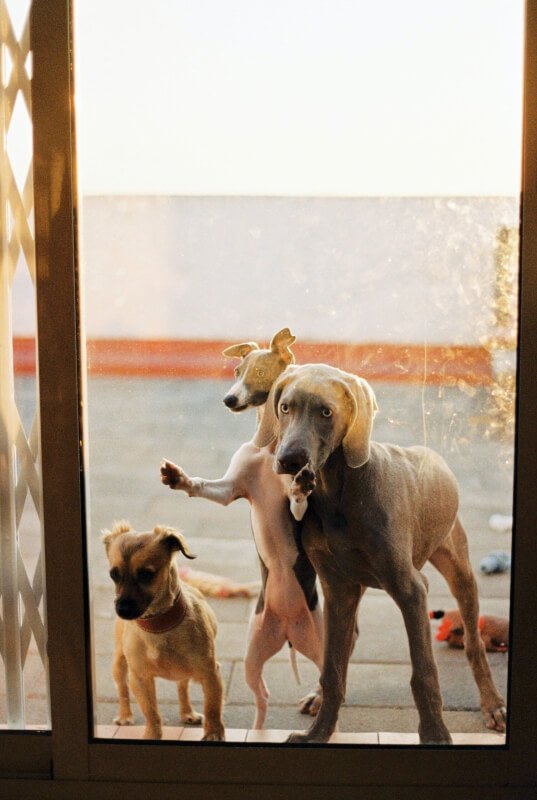Are you a proud pet owner or considering getting a pet soon? If so, it’s crucial to understand the importance of pet training. Pet training involves teaching your furry companion the necessary skills and behaviors to become a well-behaved and obedient member of your household. From simple commands like sit and stay to more complex tasks like leash walking, pet training plays a significant role in creating a harmonious and enjoyable living environment for both you and your furry friend. Let’s explore what pet training entails and why it is essential for every pet owner.
Introduction
Pet training is the process of teaching and guiding our beloved animal companions to behave appropriately and respond to commands and cues. Whether you have a dog, cat, bird, or small mammal, pet training is an essential aspect of pet ownership. It not only strengthens the bond between you and your pet but also helps ensure their safety, well-being, and integration into your household. In this comprehensive article, we will explore the different aspects of pet training, including its importance, basic principles, techniques, housebreaking and potty training, behavioral training, training different types of pets, the benefits of hiring a professional trainer, and some practical tips for pet owners.
Ready for Cat Trivia?
Test your knowledge about cats!

Understanding Pet Training
Defining Pet Training
Pet training involves teaching animals specific behaviors and commands to make them obedient, well-mannered, and easier to handle. It sets clear expectations for their behavior and helps establish boundaries and rules within a household. By providing structure and guidance, pet training allows animals to adapt to human environments and interact in a positive way with their owners and others.
Importance of Pet Training
Pet training is crucial for several reasons. Firstly, it helps prevent behavioral issues, such as aggression, destructive behavior, excessive barking, and separation anxiety. By setting clear rules and boundaries, pets understand what is expected of them and can develop self-control and self-discipline. Secondly, training enhances communication between pets and their owners, fostering a stronger bond and understanding. This makes it easier for owners to address potential problems and correct undesirable behaviors. Additionally, trained pets are safer, as they are more likely to respond to commands and avoid potentially dangerous situations.
Types of Pets That Can be Trained
Pet training is not limited to just dogs. While dogs are commonly associated with obedience training, cats, birds, and small mammals can also be trained to some extent. Cats can learn to use a litter box, respond to their names, and perform basic tricks. Birds can be taught to mimic sounds and respond to commands, while small mammals like rabbits, guinea pigs, and rats can be trained to use a litter box and interact with their owners. The key is to understand the individual characteristics and abilities of each pet species and tailor the training approach accordingly.

Basic Principles of Pet Training
Creating Trust and Bonding
One of the fundamental principles of pet training is building trust and creating a strong bond between you and your pet. This involves providing them with love, care, and positive reinforcement. Spending quality time together, engaging in play activities, and using a gentle and patient approach can help establish a sense of security and trust in your pet, laying the foundation for effective training.
Positive Reinforcement
Positive reinforcement is a powerful training technique that involves rewarding pets for exhibiting desired behaviors. This can be done through verbal praise, treats, or favorite toys. By associating desirable behaviors with positive outcomes, pets are more likely to repeat those behaviors. It is essential to reward immediately after the desired behavior occurs to reinforce the connection between the behavior and the reward.
Consistency and Patience
Consistency and patience are key elements of successful pet training. Pets thrive on routine and repetition, so it is important to use consistent commands, cues, and training methods. Likewise, patience is essential as pets may take time to understand and adapt to new behaviors and commands. Rushing or becoming frustrated can hinder the training process and cause confusion for both you and your pet.
Basic Commands and Techniques
Sit Command
The sit command is one of the most fundamental commands in pet training. It is used to teach pets to sit and stay in one place until released. To teach your pet to sit, hold a treat above their nose and move it slowly backward. As their head moves up and their rear end lowers, say “sit” and reward them with the treat. Repeat this process consistently until your pet learns to sit on command.
Stay Command
The stay command is important for keeping your pet in one place, whether it’s to prevent them from running off or to maintain control in certain situations. To teach the stay command, start with your pet in a sitting position. Place your open palm in front of their face, and while saying “stay,” take a step backward. If your pet stays in place for a few seconds, reward them with praise and/or a treat. Gradually increase the duration of the stay and the distance between you and your pet.
Come Command
The come command is essential for calling your pet to return to you. It is particularly important for their safety when off-leash or in potentially dangerous situations. To train your pet to come when called, use a positive and enthusiastic tone while saying their name and the command “come.” Encourage them to come to you with treats, toys, or other rewards. Start in a distraction-free environment and gradually increase the level of distractions to reinforce their response to the command.
Clicker Training
Clicker training is a popular technique that uses a small handheld device that makes a clicking sound when pressed. This sound serves as a signal to your pet that they have performed the desired behavior correctly. Clicker training involves pairing the clicker sound with a reward, such as treats or praise, to reinforce the behavior. By associating the sound with positive outcomes, your pet can quickly understand which behaviors will earn them rewards.
Crate Training
Crate training is a useful technique for providing your pet with a safe and secure space, especially when you are not at home or during travel. It involves gradually introducing your pet to their crate, making it a positive and comfortable place for them. Start by leaving the crate door open and placing treats and toys inside. Encourage your pet to explore and enter the crate on their own. Gradually increase the duration of time spent inside the crate while ensuring your pet feels safe and secure.

Housebreaking and Potty Training
Importance of Housebreaking
Housebreaking, also known as potty training, is an essential aspect of owning a pet, especially dogs and cats. Housebreaking teaches pets where it is appropriate to eliminate waste and helps maintain cleanliness and hygiene within your home. A well-housebroken pet is less likely to have accidents indoors and is more comfortable and at ease in their surroundings.
Establishing a Routine
Establishing a routine is crucial for successful housebreaking. Set a regular schedule for feeding, watering, and taking your pet outside to eliminate waste. Puppies and kittens may need to be taken out more frequently, as their bladders are smaller. Consistency is the key to reinforcing appropriate potty habits.
Reward-Based Training
Using reward-based training methods is highly effective for housebreaking. When your pet eliminates waste in the appropriate area, immediately reward them with praise, treats, or playtime. This positive reinforcement helps them understand that eliminating waste in the designated spot is desirable behavior.
Addressing Accidents
Accidents are bound to happen during the housebreaking process, and it’s important to address them properly. When an accident occurs, do not punish or scold your pet. Instead, calmly and immediately clean up the mess using appropriate cleaners that eliminate odor. Consistency, patience, and positive reinforcement are key to successfully housebreaking your pet.
Behavioral Training
Understanding Behavioral Issues
Pets, like humans, can exhibit behavioral issues that may require training to address. These issues can range from aggression and fearfulness to separation anxiety and destructive behavior. Understanding the underlying causes of these behaviors and implementing appropriate training techniques is essential for a harmonious relationship with your pet.
Addressing Aggression
Aggression in pets can be directed towards humans, other animals, or both. It is important to identify the triggers for aggression and address them through training and behavior modification. Working with a professional trainer experienced in dealing with aggressive behaviors can be helpful in managing and resolving aggression issues safely and effectively.
Managing Separation Anxiety
Separation anxiety is a common behavioral issue in pets, especially dogs. It is characterized by excessive distress or anxiety when left alone or separated from their owners. Training techniques such as desensitization and counter-conditioning can help alleviate separation anxiety. Gradually exposing your pet to short periods of alone time and providing them with engaging toys or puzzles can also aid in managing this issue.
Preventing Destructive Behavior
Destructive behavior, such as chewing furniture or excessive digging, can be frustrating for pet owners. It is important to understand that these behaviors are often a result of boredom, anxiety, or insufficient physical and mental stimulation. Addressing destructive behavior through training involves providing appropriate outlets for your pet’s energy, such as toys, games, puzzles, and regular exercise. Engaging your pet in mentally stimulating activities can also help redirect their focus and prevent destructive behavior.

Training Different Types of Pets
Training Dogs
Dogs are known for their trainability and are often the most commonly trained pets. Basic obedience training for dogs includes commands such as sit, stay, come, and leash manners. Dogs can also be trained for advanced commands, agility, search and rescue, and therapy work. Training dogs requires consistency, positive reinforcement, and a good understanding of their breed and temperament.
Training Cats
Although cats are often perceived as independent animals, they can still learn basic commands and certain behaviors through training. Clicker training, positive reinforcement, and treats can be used to teach cats to respond to their names, come when called, and perform simple tricks. Litter box training is another essential aspect of training cats, ensuring they understand where to eliminate waste.
Training Birds
Birds are highly intelligent creatures that can be trained to mimic sounds, respond to commands, and perform tricks. Training birds usually involves positive reinforcement, repetition, and consistency. By using treats, verbal cues, and clicker training, birds can learn to step up onto your hand, return to their cage on command, and perform other entertaining behaviors.
Training Small Mammals
Small mammals like rabbits, guinea pigs, and rats can also be trained to some extent. Using positive reinforcement and treats, these animals can learn to use a litter box, come when called, and interact with their owners. As with other pets, training small mammals requires patience, consistency, and knowledge of their individual characteristics and needs.
Professional Pet Trainers
Benefits of Hiring a Professional Trainer
While it is possible to train your pet on your own, hiring a professional pet trainer can offer numerous benefits. Professional trainers possess the knowledge, experience, and skills to effectively address specific training needs and address complex behavioral issues. They provide guidance and support tailored to your pet’s individual needs and can help expedite the training process. Working with a professional trainer also ensures that you are using humane training methods and creating a positive learning environment for your pet.
Finding the Right Trainer
When looking for a professional pet trainer, it is important to find someone who is experienced, qualified, and uses positive reinforcement techniques. Research local trainers, read reviews, and ask for recommendations from friends or veterinarians. It is best to choose a trainer who aligns with your training goals and has experience working with your pet’s species and breed.
Cost Considerations
The cost of hiring a professional pet trainer can vary depending on factors such as location, trainer experience, and the type of training required. Some trainers offer individual sessions, while others provide group classes or packages. While cost is an important consideration, it is essential to prioritize the quality of training and the welfare of your pet.

Training Tips for Pet Owners
Start Training Early
Early training is essential for all pets. The earlier you start training, the easier it is to establish good habits and prevent undesirable behaviors from developing. Puppies and kittens are particularly receptive to training, so begin socialization, obedience training, and housebreaking as early as possible.
Use Positive Reinforcement
Positive reinforcement is key to successful pet training. Reward your pet with treats, praise, and play for displaying desired behaviors. Avoid punishment or harsh training methods, as they can undermine trust, cause stress, and worsen behavioral issues.
Be Patient and Consistent
Training takes time, so patience is crucial. Understand that your pet may not grasp a command or behavior immediately. Consistency is equally important. Use the same commands and cues, and train in similar environments to reinforce learning and prevent confusion.
Practice Regularly
Training should be a regular part of your pet’s routine. Set aside dedicated time each day for training sessions, but also incorporate training opportunities throughout your daily interactions. Reinforce behaviors and commands during walks, playtime, and everyday activities to strengthen their understanding and response.
Be Mindful of the Pet’s Behavior and Health
Pay attention to your pet’s behavior and health throughout the training process. Notice any changes or signs of discomfort, as it may indicate underlying medical conditions or stress. Consult with a veterinarian if you have concerns about your pet’s behavior or health.
Conclusion
Pet training is an important aspect of responsible pet ownership. It allows pets to develop good manners, strengthens the bond between pets and their owners, promotes their safety, and enhances their overall well-being. By understanding the basic principles of training, implementing proper techniques, and addressing specific training needs, you can create a harmonious and fulfilling relationship with your pet. Whether you choose to train your pet yourself or enlist the help of a professional trainer, remember to be patient, consistent, and always use positive reinforcement. With time, effort, and a lot of love, you can turn your pet into a well-behaved and happy companion.



